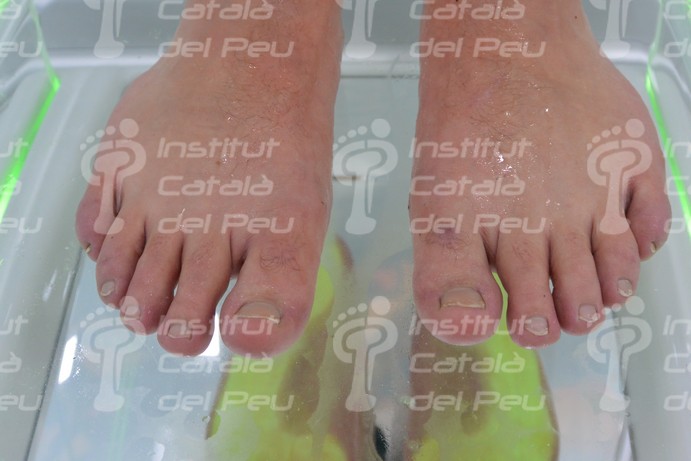Hyperhidrosis is a disease that is characterised by chronically increased sweating. An average person sweats when he/she is exposed to high temperatures, when he/she does exerciseor when the person is in stressful situations. In this way, the temperature is regulated, toxins are eliminated and the skin is protected. In the case of hyperhidrosis, the increase in sweat tales place without such triggers.
It starts with puberty or at an early age and can last a liftime if no treatment followed. The cause of hyperhidrosis is an overstimulation of the sympathetic nervous system (which is part of the autonomic nervous system). The result is increased sweating by the organism that is -needed to regulate body temperature.
According to the affected body areas, there are four kinds of sweating: axial, palmar, plantar and facial.
Depending on the origin of the sweat, there are two very different types:
- Primary hyperhidrosis: without any apparent cause and it appears throughout one’s life. It affects hands, feet and armpits and is usually hereditary.
- Secondary hyperhidrosis: this is caused by disorders of the thyroid gland, infections, menopause, tumors, obesity and diabetes mellitus.
This classification covers organic hyperhidrosis, although sweating while feeling nervous or emotional should be differentiated in a non-organic hyperhidrosis section.
As a result of excesive sweating the patient can develop fungal infections, contact dermatitis, as well as skin disorders like odor, irritation, desquamation and pigmentation.
Skin colour can be pink or whitish and it can be white and peeling. If the area affected by excess sweating gives off a fetid odor it is called bromohidrosis. The bromohidrosis is a consequence of the decomposition of sweat from bacteria and yeast.
The treatment of hyperhidrosis is varied:
- Topical antiperspirant solutions with high concentrations of aluminum chloride (mexahydrated) or boric acid; as a contraindication it may irritate the skin.
- Iontophoresis. The administration of low voltage electric current of through the skin blocks the sweat ducts to some extent. Several sessions of between 10 and 20 minutes must be given and it is not always effective.
- Anticholinergic medicine. Glycopyrrolat and oxybutynin are two examples although their use must be assessed because they may cause side effects.
- Thoracic sympathectomy through VATS [Video-assisted thoracoscoic surgery](provided dermatological treatments do not solve the problem).
Excessive sweating may cause emotional stress in the patient because of situations of insecurity and shame affecting his/her personal, working and social relationships.
It is important that the professional provides a good health education that -covers everything from -suitable hygienic habits for the case to the awareness of the footwear and clothing to be used by the patient.
Pitted keratolysis. It starts with maceration and bromohidrosis.
Detail of skin maceration.
Plantar view of skin maceration.
Erythrasma
Severe hyperhidrosis. Front view.
Severe hyperhidrosis. Back view.
Pitted keratolysis.
Interdigital Tinea pedis.
Clinical case: patient with hyperhidrosis and multiple cutaneous erosion (left foot).
Clinical case: patient with hyperhidrosis and multiple cutaneous erosion (right foot).
Clinical case: patient with hyperhidrosis and multiple cutaneous erosion (right foot).
Evolution of this case after 30 days’ treatment.
Discharge of this case after one month and a half.
